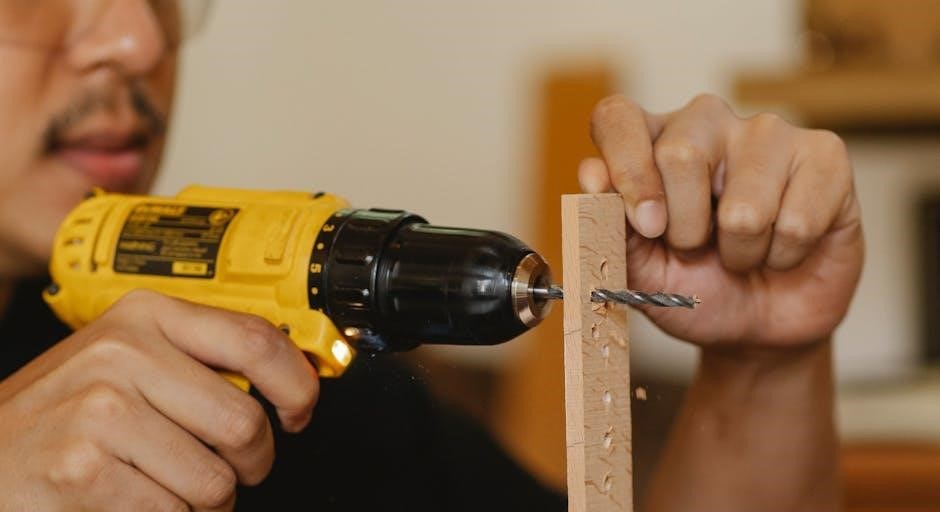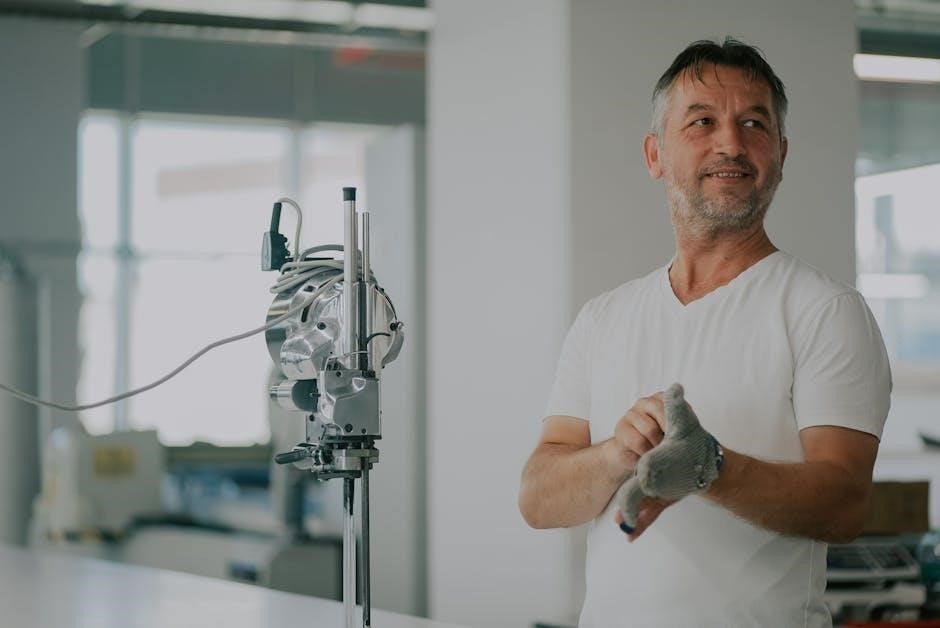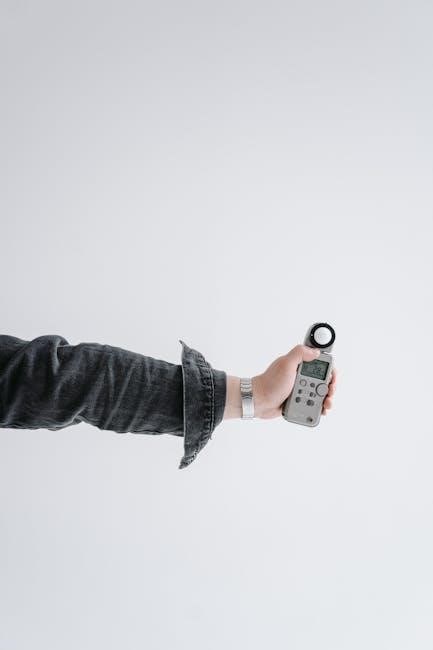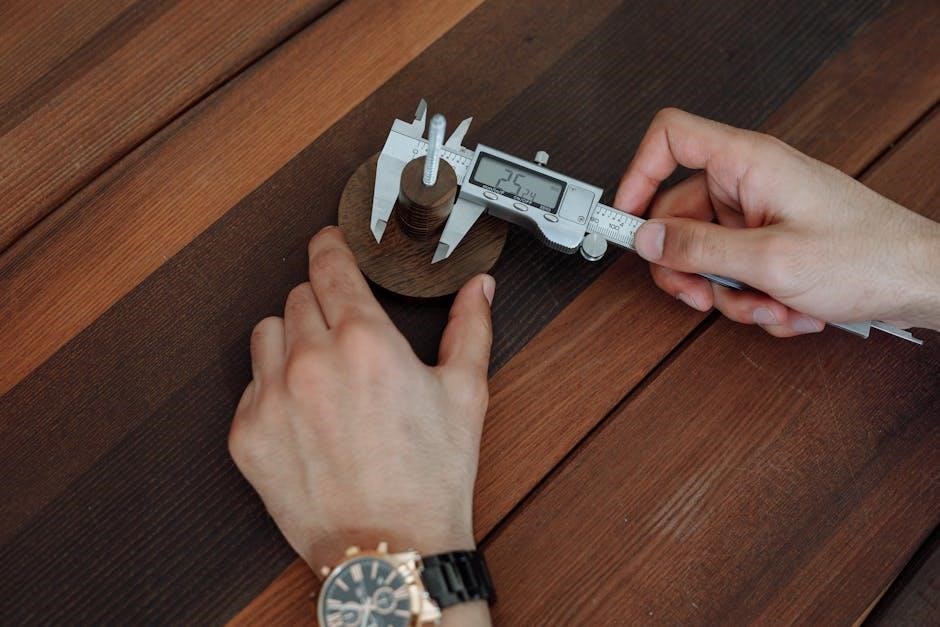A manual propelling device, such as a paddle, oar, or anchor, is essential for controlling a boat when engine power fails, ensuring safety and maneuverability in emergencies.
1.1 Definition and Purpose

A manual propelling device is a tool used to maneuver a boat without engine power. Examples include paddles, oars, and anchors. Their primary purpose is to provide control and safety in emergency situations, such as engine failure, ensuring the ability to steer or stabilize the vessel. These devices are essential for maintaining safety and preventing drifting, making them a critical component of boating equipment. They are simple, reliable, and indispensable in various water conditions.
1.2 Importance in Boating Safety
Manual propelling devices are vital for ensuring safety in boating emergencies, such as engine failure or harsh weather conditions. They provide a reliable means to control the boat’s movement, preventing drifting and allowing boaters to navigate to safety. These devices are often legally required, underscoring their importance in compliance with boating regulations. Their presence ensures peace of mind and the ability to maintain control when modern propulsion systems fail, making them indispensable for safe boating practices.

Types of Manual Propelling Devices
Manual propelling devices include paddles, oars, and other tools like poles or manual anchors, each designed for specific boating needs and environments, ensuring effective control and maneuverability.
2.1 Paddles
Paddles are essential manual propelling devices, typically consisting of a flat blade attached to a shaft. They are shorter than oars, designed for one-handed or two-handed use, and are often used in smaller boats or for precise maneuvering. Made from durable materials like aluminum, fiberglass, or wood, paddles provide efficient control and are lightweight for easy handling. They are ideal for calm waters and recreational boating, offering a reliable means of propulsion when engines fail.
2.2 Oars
Oars are long, flat-bladed tools used for manual propulsion, typically paired with oarlocks on a boat. Unlike paddles, oars are operated by gripping the handles and moving them through the water in a pulling motion. They are often used in larger boats or for sustained propulsion. Made from durable materials like wood or aluminum, oars provide excellent control and leverage, making them ideal for maneuvering in open water or during emergencies when engine power is lost.
2.3 Other Devices (Poles, Manual Anchors)
Beyond paddles and oars, manual propelling devices include poles and manual anchors. Poles are long, sturdy tools used to push off from the bottom in shallow waters or maneuver in tight spaces. Manual anchors, while primarily for stabilization, can assist in controlling drift. Both are simple, durable, and require no mechanical parts, making them reliable for emergencies or calm-water navigation. They’re also environmentally friendly, leaving no trace in natural settings.
Key Features and Benefits
Manual propelling devices are durable, lightweight, and easy to use, providing reliable control in emergencies. They are environmentally friendly, leaving no trace in natural settings, and require minimal maintenance.
3.1 Durability and Material
Manual propelling devices are crafted from durable materials like aluminum, wood, or fiberglass, ensuring longevity and resistance to environmental stress. High-quality construction withstands harsh marine conditions, including saltwater and heavy use. Lightweight yet robust designs enhance portability while maintaining strength. These materials are often resistant to rust, rot, and warping, making them ideal for withstanding the elements. Durable construction ensures reliability in emergencies, providing boaters with a dependable means of control and propulsion when needed most.
3.2 Maneuverability and Control
Manual propelling devices offer precise maneuverability, allowing boaters to navigate through tight spaces and calm waters with ease. Their lightweight design and ergonomic handles provide comfortable grip and control, reducing fatigue during extended use. Smooth movement and responsive handling ensure accurate steering, making them indispensable for maintaining direction and stability in various water conditions; This level of control is crucial for both recreational and emergency situations, ensuring safe and efficient operation of the boat.
3.4 Environmental Friendliness
Manual propelling devices are eco-friendly, producing no emissions or noise pollution. They rely on human power, reducing reliance on fossil fuels and minimizing environmental impact. Their quiet operation preserves marine ecosystems, while their simplicity ensures minimal waste during production. These devices are ideal for environmentally conscious boaters, promoting sustainable navigation and helping to protect fragile water environments for future generations.

Legal and Regulatory Requirements
Boats are often required to carry manual propelling devices like paddles or oars to ensure safety in emergencies. These regulations vary by jurisdiction but are crucial for compliance.
4.1 Mandatory Carriage of Manual Propelling Devices
Regulations often require boats to carry manual propelling devices like paddles or oars. These devices ensure safety in case of engine failure. Authorities, such as Transport Canada, mandate their presence to enable maneuverability in emergencies. Compliance is crucial for legal boating operations and ensures preparedness for unexpected situations on the water.
4.2 Compliance with Boating Laws
Compliance with boating laws ensures safe and legal operations. Manual propelling devices must be used correctly to prevent penalties. Adhering to regulations guarantees preparedness for inspections and emergencies. Stay informed about local and federal guidelines to maintain compliance and ensure safety on the water.
Choosing the Right Manual Propelling Device
Selecting the right manual propelling device involves considering boat size, type, and material to ensure optimal performance and durability for safe and efficient operation.
5.1 Considerations Based on Boat Size and Type
When selecting a manual propelling device, consider your boat’s size and type. Larger boats may require longer, sturdier oars, while smaller vessels can use lighter paddles. Ensure the device matches the boat’s material and design for optimal performance. Fiberglass oars offer durability for heavy use, while aluminum paddles are lightweight and portable. Proper fit ensures efficient maneuverability, making it easier to control the boat in various water conditions.
5.2 Material and Construction
Manual propelling devices are crafted from materials like aluminum, fiberglass, or wood, ensuring durability and efficiency. Aluminum offers lightweight strength, while fiberglass provides weather resistance and longevity. Wooden options, though heavier, deliver traditional aesthetics and grip. The construction must balance weight, strength, and flexibility to suit various boating needs, ensuring reliability in both calm and challenging conditions.
5.3 Maintenance and Storage Tips
Regularly inspect manual propelling devices for wear and tear, cleaning them to prevent damage. Store in a dry, protected area to avoid warping or cracking. Lubricate hinges and locks to ensure smooth operation. Avoid exposure to extreme temperatures or moisture, which can degrade materials. Proper maintenance ensures reliability and longevity, keeping your device ready for emergencies or recreational use.
Real-World Applications
Manual propelling devices are indispensable in emergencies like engine failure, ensuring boat control. They’re also ideal for calm waters, offering a peaceful boating experience, and support environmental conservation by minimizing ecological impact during patrols or research.
6.1 Emergency Situations
In emergency situations, such as engine failure, manual propelling devices like paddles and oars are crucial for maintaining control and steering the boat to safety. These tools provide a reliable backup, allowing boaters to navigate calmly and effectively until help arrives. Their presence ensures peace of mind, knowing there’s an alternative propulsion method available in critical moments. Manual propulsion can be the difference between safety and potential danger in unforeseen circumstances.
6.2 Calm Waters and Recreational Use
Manual propelling devices are not only for emergencies; they also enhance recreational boating experiences in calm waters. Paddles and oars allow for quiet, peaceful navigation, making them ideal for fishing or exploring serene environments. Using these devices promotes a connection with nature and provides a relaxing, low-effort way to enjoy time on the water. They are perfect for leisurely outings, offering control and maneuverability in tranquil settings.
6.3 Environmental and Conservation Efforts
Manual propelling devices play a significant role in environmental conservation by minimizing ecological disturbance. Their silent operation reduces disruption to aquatic life, making them ideal for eco-friendly boating. Additionally, these devices aid in conservation efforts by enabling clean-up initiatives in sensitive waterways without the pollution caused by motorized propulsion, thus protecting marine ecosystems and promoting sustainable boating practices.
Manual propelling devices are essential for boating safety, offering reliability in emergencies and eco-friendly operation, making them a vital tool for responsible and sustainable water navigation.
7.1 Summary of Key Points
Manual propelling devices, such as paddles, oars, and anchors, are vital for controlling boats without engine power. They ensure safety in emergencies, offering reliability and eco-friendly operation. Essential for calm waters and conservation efforts, these tools comply with legal requirements and are a must-have for sustainable navigation, ensuring peace of mind for boaters.
7.2 Final Thoughts on Importance
Manual propelling devices are indispensable for boating safety, offering reliability in emergencies and calm waters alike. Their eco-friendly nature aligns with conservation goals, while legal requirements ensure their necessity. Investing in durable, well-suited devices enhances control and peace of mind, making them a vital component for responsible and sustainable boating practices worldwide.

Additional Resources
Visit the American Red Cross or Transport Canada for comprehensive guides on manual propelling devices, safety protocols, and legal requirements to enhance your boating knowledge and preparedness.
8.1 Recommended Reading
For deeper insights, refer to the American Red Cross Lifeguarding manual and Transport Canada’s boating safety course materials. These resources provide detailed guidance on manual propelling devices, safety protocols, and legal compliance. Additionally, explore instructional books on boating techniques and marine conservation to broaden your understanding of effective and sustainable boating practices.
8.2 Safety Guidelines and Manuals
Consult the American Red Cross Lifeguarding manual and Transport Canada’s boating safety course for comprehensive guidelines; These manuals emphasize proper use, inspection, and storage of manual propelling devices. They also outline emergency procedures and legal requirements, ensuring safe and efficient operation. Adhering to these standards is crucial for boater safety and environmental protection, providing practical advice for all watercraft operators.